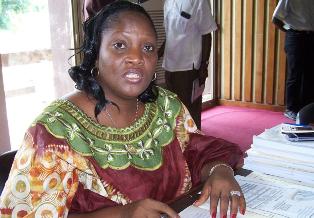Editorial: Good Initiative Against FGM, But…
The fight against Female Genital Mutilation is currently the leading advocacy program across the world, most especially in countries where it is practiced. The World Health organization or WHO defines Female Genital Mutilation or FGM as ‘all procedures that intentionally alter or cause injury to the female genital organs for non-medical reasons or no health benefits for girls and women.
FGM, also known as female genital cutting and female circumcision, causes severe bleeding and problems urinating, and later cysts, infections, infertility, as well as complications in childbirth, especially increased risk of newborn deaths, according to the WHO. Practiced in 28 countries or more in western, eastern and north-eastern Africa, in parts of the Middle East, and within some immigrant communities in Europe, North America and Australasia,
there are four classifications of FGM, the main three of which are Type I, removal of the clitoral hood, almost invariably accompanied by removal of the clitoris itself (clitoridectomy); Type II, removal of the clitoris and inner labia; and Type III (infibulation), removal of all or part of the inner and outer labia, and usually the clitoris, and the fusion of the wound, leaving a small hole for the passage of urine and menstrual blood—the fused wound is opened for intercourse and childbirth, according to the World Health Organization.
It says about 85 percent of women undergo FGM experience Types I and II, and 15 percent Type III, though Type III is the most common procedure in several countries, including Sudan, Somalia, and Djibouti. These range from a symbolic pricking or piercing of the clitoris or labia, to cauterization of the clitoris, cutting into the vagina to widen it (gishiri cutting), and introducing corrosive substances to tighten it.
Opposition to FGM focuses on human rights violations, lack of informed consent and health risks, which include fatal hemorrhaging, epidermoid cysts, recurrent urinary and vaginal infections, chronic pain, and obstetrical complications.
Three million girls are reported to be at risk of FGM a year in Africa alone, and 140 million girls and women worldwide have undergone genital mutilation, according to the WHO. As the result of its alarming rate, FGM is currently at the core of the conference of women underway at the United Nations in New York. To fast track the fight against FGM, considered a major violation of the human rights of women, the Government of the United Kingdom or UK on Wednesday announced a pledge of more than US$70m-the biggest ever international investment in battling the practice.
A statement released from the ongoing Commission on the Status of Women Meeting quoting the British International Development Minister Lynne Featherstone said it was time to back the African-led movement to break the taboo on FGM in an effort expected to reduce the practice by 30% in at least ten priority countries in the next five years.
[bsa_pro_ad_space id=1]
According to the statement issued by the U.K Mission to the UN, the British plans to support work to end FGM in at least fifteen countries by working directly within local communities and also governments and traditional leaders to back laws to end the practice of FGM, as well as fund research into the most cost-effective approaches to ending FGM, to ensure its work has the maximum impact and support Diaspora communities to help change practices in their countries of origin.
“It is time to break the taboo on genital mutilation. For too long the international community has been cowardly on this subject, finding it too difficult to tackle. Girls around the world have suffered a lifetime of damage, sometimes even death, as a result.”
“Female genital cutting is one the worst kind of gender violence. We know most families want the best for their children and education, and changing cultural norms, rather than merely condemnation, is key,” Lynne Featherstone said.
While the women of Africa, British and other Governments and institutions must be commended for their efforts toward eradicating FGM, emphasis must also be placed on transforming various traditional women societies in the best interest of the cultural heritage of traditional women. While discouraging FGM, especially in Africa, the new program must also incorporate reform programs that will uphold and protect the culture of traditional African women.
Even though the new program may occasion the proliferation of women NGO’s (and probably those to be established by men) because of the huge ‘cash’ involved, donors must exercise the highest degree of realism for the money’s worth by ensuring that those who implement the program, especially in Africa and Liberia don’t capitalize on the cash involved to create trouble- in terms of discouraging FGM and not giving back replacements.




















